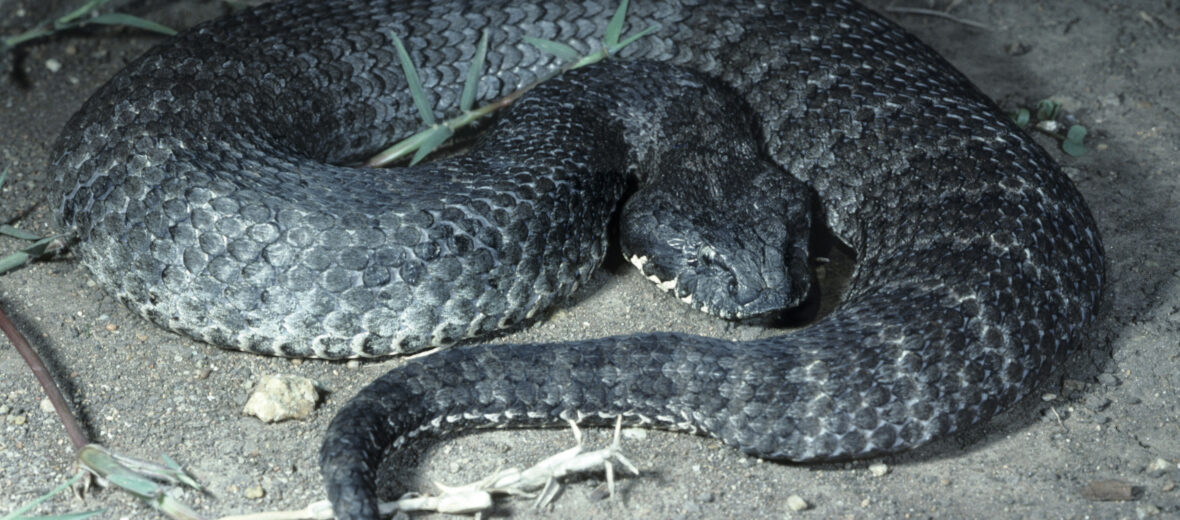
The common death adder can be seen throughout much of eastern and coastal southern Australia. In central Australia you’ll find the desert death adder and to the north you’ll see the northern death adder. There are also several other species around the country with less of a range. Common death adders inhabit open woodland, scrub, and low-growing woody vegetation. They are ambush predators that will sit motionless for sometimes days on end awaiting for prey to happen by.
First the Stats…
Scientific name: Acanthophis antarcticus
Weight: Up to 3+ lbs.
Length: Up to 3.3 feet
Lifespan: Up to 20 years
Now on to the Facts!
1.) Their diet consists of small mammals and birds.
2.) Before the introduction of antivenom about 60% of bites to humans were fatal!
3.) They have what is believed to be the fastest strike of any Australian snake! That being said, they are reluctant to bite, but will happily do so if threatened.
4.) They belong to the same family as other venomous Australian snakes, the elapids. But they are not true adders.
5.) While lying in wait, the common death adder will twitch their small tail right above their head as a lure. This attracts attention from a passer by and draws them closer to striking range.
But wait, there’s more on the death adder!
6.) Snakebite deaths in Australia are rare, with only 14 between the years 2000 – 2010 recorded by the National Coronial Information Service.
7.) This snake doses an average of 180 mg of venom in a single strike, which is enough to kill several men! The venom paralyzes its prey, eventually shutting down their respiratory system.
Did you know…?
After a bite, death can occur within 6 hours!
8.) The death adder has the longest fangs of any venomous Australian snake.
9.) Scientists have recently found that death adder venom is an anticoagulant, a discovery that could help heart attack and stroke victims.
10.) Females produce up to 30 live young in late summer.
Now a Short Death Adder Video!
Also, check out the Critter Science YouTube channel. Videos added frequently!
Want to suggest a critter for me to write about? Let me know here.



